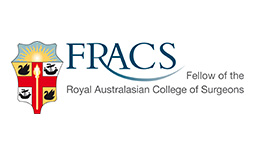Tonsillectomy is a surgical procedure performed to remove one or both tonsils, typically due to infection. The tonsils are a paired set of lymphoid structures that sit on the sides of your throat. Contrary to popular belief, the tonsils have no function. Your tonsils do not enhance your immunity nor prevent you from getting infections, you can lead a healthy life without them. Tonsillitis and the need for tonsillectomies are more common in children, however the need for tonsil removal may occur at any age.
Tonsils
Reasons for Tonsil Removal
Recurrent Infections
Infection occurs when bacteria accumulates in tiny crevices of the tonsil. Typically tonsil removal is considered once you’ve had at least five recurrent infections per year. However, tonsil removal is not only measured by how often you get an infection but also by the severity of the infection. If you have severe infections needing hospitalization, you may benefit from having your tonsils removed. Ultimately, a tonsillectomy may provide you great relief if recurrent tonsil infections are affecting your overall quality of life
Breathing Issues, Snoring, and Sleep Apnea
In certain patients, grossly enlarged tonsils can occupy too much space in the throat, resulting in heavy breathing, snoring or sleep apnea. Inflamed tonsils restrict airflow through the nose causing snoring to become louder. When snoring is chronic and sever, it may cause serious and even life-threatening problems including obstructive sleep apnea (OSA). For sleeping disorders related to inflamed tonsils, tonsillectomy surgery may improve your restless nights.
Stone Accumulations within the Tonsils
‘Stones’ can form on the surface of the tonsil due to small crevices within the tonsil that accumulate debris and bacteria. Over time the buildup of debris and bacteria compress and form into little, smelly white stones called tonsilolith. Patients typically find these stones extremely uncomfortable and occasionally they can be seen protruding from of the throat. Patients often complain of having bad breath despite the fact of having excellent dental hygiene.
Suspicion of Cancer
Tonsil cancer is rare and typically occurs in people who smoke or drink excess amounts of alcohol, although this is not always the case. If you have a lesion on the tonsil surface or if one tonsil is disproportionate in size to the other, this may be an indication of tonsil removal. The tonsil in concern typically needs to be 2 or 3 times the size before it is removed for suspicion of cancer.
Tonsillectomy Consultation
If you have symptoms of recurrent tonsillitis or other tonsil concerns, Dr. Choroomi can objectively help you decide if tonsil removal is the best option to relieve your symptoms. During your consultation Dr Choroomi will perform a full head and neck examination involves examining the inside of your mouth and throat with a endoscopic camera. If you display symptoms of snoring, Dr. Choroomi will also look at your nasal passages and lower throat to identify any secondary cause.
How is a Tonsillectomy Performed?
Dr Choroomi performs tonsillectomy surgery under general anaesthesia in an accredited hospital. At the beginning of the operation, an instrument is placed inside your mouth for protection and to give Dr Choroomi a superior view of your entire tonsil. A burning technique is used to dissect the tonsils off the sidewalls of the throat. At the end of the operation, Dr. Choroomi injects a long acting, local anaesthetic that will reduce pain for 12-24 hours.
Recovering After Tonsillectomy Surgery
Patient safety is Dr Choroomi’s number one concern; therefor, he requires an overnight stay in the hospital following tonsillectomy. If no issues arise, patients will be discharged the next morning following post- operative instructions. Usually patents need a full week off of work or school to recover after surgery.
During recovery you can expect:
- Pain will be felt in your throat and ears. The same nerves that go to your throat go to your ear; therefor, it is common to have a deep seeded earache after this operation. This lasts up to 10 days, peaking around day 4,5,6. Pain medication can be prescribed to relieve any discomfort.
- Mild amounts of blood stained saliva may be seen for up to 2 weeks after your operation.
- A white or yellow coating may be seen where your tonsils use to be. This is neither puss nor infection, simply healing tissue much like a scab that is forming on the back of your throat. Do not gargle vigorously or use any alcohol/antiseptic based gargles, as this will cause pain and discomfort, increasing your risk of bleeding. This white coating should disappear within 2 weeks as healing progresses.
- Avoiding exercise or strenuous activity for two weeks post-operation.
Dr. Choroomi requests patients stay close to home for 2 weeks, i.e. do not go on a vacation, due to a risk of bleeding.
Tonsillectomy Risks
One of the main risks of tonsillectomy is bleeding during post-operative recovery. If you experience bleeding, beyond normal blood stained saliva, head directly to your nearest emergency department as this may be a sign of tonsil haemorrhage. To help minimise this risk, Dr. Choroomi suggests taking it easy for a few weeks after your operation.
- Do not perform any strenuous activity or physical exercise
- Do not take any other medication other than what was prescribed to you and approved by Dr Choroomi. Aspirin or ibuprofen, these medications thin the blood and encourage bleeding.
Non- Surgical Alternative for Tonsillectomy
There are very few non-surgical options for patients who have tonsil problems. If the problem is a recurrent infection, antibiotic therapy may be given to clear the infection.









